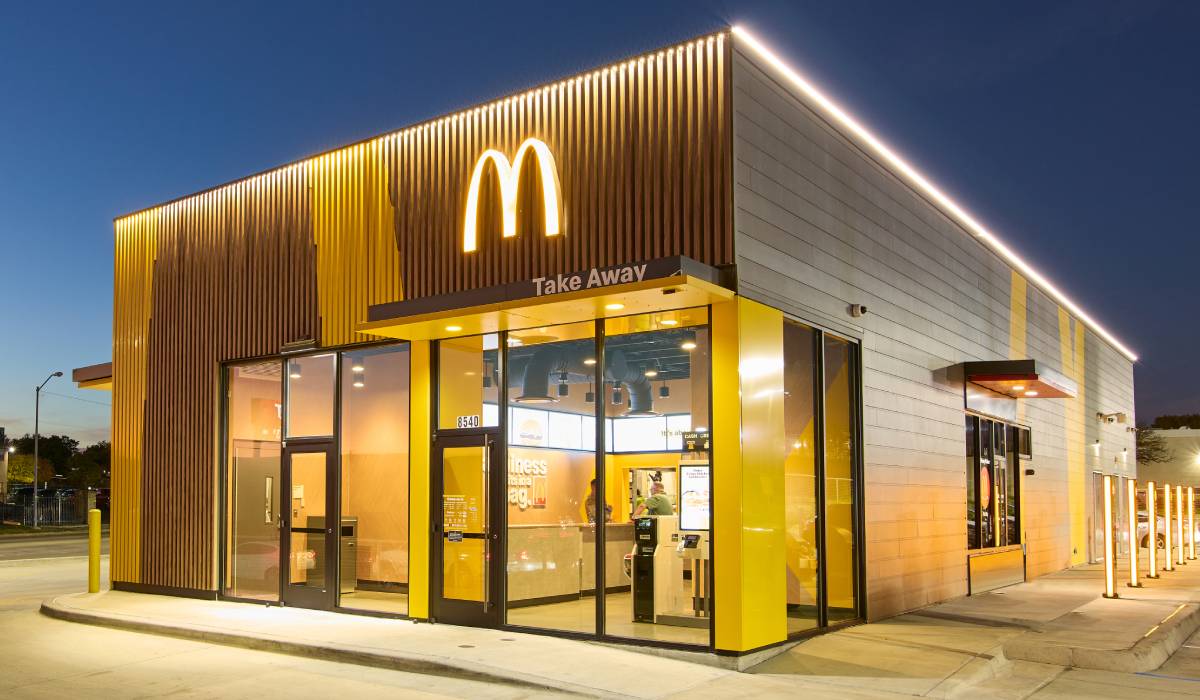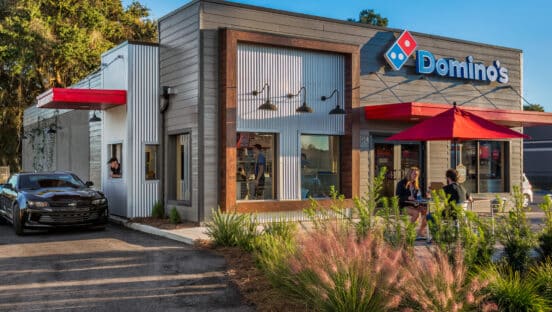When Papa John’s CEO Rob Lynch joined the brand in August 2019, the enormous potential was apparent, he said.
Lynch had zero doubt Papa John’s could become the “best pizza delivery company in the world.” And a year and a half later, Lynch believes the brand has a clearer path than any other point in the chain’s history. The goal is no longer far-fetched.
Lynch’s optimism comes as 2020 same-store sales rose 17.6 percent in North America and 12.6 percent internationally. In Q4, comps lifted 13.5 and 21.4 percent, respectively. The recent period was the third consecutive quarter of double-digit comp sales growth, and the sixth straight of positive comps in North America.
The brand also achieved record average-unit volumes by crossing $1 million in North America for the first time in company history. Eighteen months ago, that figure was around $850,000. Median unit profits and margins were some of the highest in the company’s history, and the biggest gains came from the bottom quintile of stores.
Papa John’s also added 10 million new and lapsed customers through its digital channels, helping the Papa Rewards program gain five million new members. Sales through third-party delivery providers, a significant source of first-time users, increased four-fold last year.
READ MORE: Why Papa John’s Was 2020’s Most Transformational Brand
“Today’s strong momentum has been steadily building since the back half of 2019,” Lynch said during the brand’s Q4 earnings call. “At that time, we established our company purpose, values, and strategic priorities. We rebuilt a leadership team who reflected those values, and we removed the guardrails around innovation.”
With innovation as a priority in 2020, Papa John’s aggressively leaned into new items such as Papadias, Jalapeño Popper Rolls, and Shaq-a-Roni Pizza. The chain ended the year by releasing Epic Stuffed Crust, which Lynch said is a huge part of Papa John’s 2021 plans. The latest item represents significant mix and provides a higher average ticket.
“The Stuffed Crust customer is an avid pizza fan,” Lynch said. “They have higher frequency, higher ticket averages, and we haven’t really been able to tap into that in the past.”
Lynch said Papa John’s holds innovation to three criteria—customers’ desire for the product, supply chain logistics, and ease of operations. The third point was especially key because of increased sales volumes and complexity that comes with innovation. Papa John’s lifted that burden through the addition of 30,000 new workers and investments in dough spinners, improved cut stations, and Papa Call—a new, centralized call center.
The CEO explained Epic Stuffed Crust was probably the most challenging innovation Papa John’s has launched. The brand developed the item for a year, and worked closely with franchisees to ensure it was ready. At first, there was a learning curve, but Papa John’s placed the item in restaurants prior to the full-scale media announcement to mitigate challenges. When talking to operators now, Epic Stuffed Crust is just another item that Papa John’s makes.
“We had to bring on a lot of new team members to be able to handle the influx of transactions, but our team did it,” Lynch said. “Our franchisees did it. And now it’s just become the new norm. Our operating model is set up to be able to deal with these types of volumes. The customer satisfaction scores have not been negatively impacted despite all that incremental volume.”
The elevated sales and improved profitability feeds into Papa John’s growth strategy, which Lynch said will be at “historical levels” in 2021. The chain ended 2020 with 5,400 stores—3,289 in North America and 2,111 internationally. Twenty-five North American stores opened in Q4 and 73 debuted internationally.

Papa John’s achieved some of the lowest closure rates in several years in Q2 and Q3, but in Q4, shutterings picked up slightly with 22 in North America and 36 internationally. However, CFO Ann Gugino explained this was an effort to close unprofitable locations.
“We believe this has created a more profitable foundation going into 2021, freeing up capital and management focus for us and our franchisees to develop new, profitable opportunities,” she said.
Lynch said Papa John’s built development infrastructure to the point where the brand is able to assist franchisees throughout the entire process. Before Lynch’s tenure, the chain didn’t have a real estate team, advanced mapping capabilities to highlight new trade opportunities, or sophisticated design and construction abilities. All of it was built in the last year.
The CEO said the chain is ready to deploy each of those measures against franchisees who have “more cash than they’ve ever really had.” Franchisees, who previously thought they couldn’t increase their footprint, are now asking the chain to come into their market and leverage the data-driven tools to identify how much they can grow.
“Markets that were historically thought to be completely built out and developed have significant opportunity,” Lynch said. “We obviously have big white space in places like California and out West where we’re less developed, but we are identifying development opportunities really in every market across the country.”
The growth is balanced between existing and new franchisees, he added. Lynch said not many current operators are willing to sell, so the brand is exploring whitespace opportunities to bring in new partners where it makes sense.
Papa John’s is also planning to increase its company footprint, which Gugino said are a “seed for franchise development activity in new markets or for investors who want to begin with a turnkey operation in which to build.”
Although he didn’t disclose specifics, Lynch said Papa John’s is working on refranchising deals with current and potential operators. However, the challenge is that these stores are profitable. A year and a half ago when Papa John’s discussed refranchising as part of development, the economics were different around the company-run stores, he said.
“Trading company-owned restaurants for loyalty streams seemed like a really easy decision to make,” Lynch said. “At this point, because of the margin enhancements, because of flow through, because of the AUVs, it’s become a little bit of a different math equation. We are working with franchisees. It’s going to take a lot of development for us to part with our restaurants.”
For the full year, revenue lifted 12 percent to $1.8 billion. Operating income increased from $24.5 million to $90.2 million and net income rose from $4.9 million to $57.9 million.








